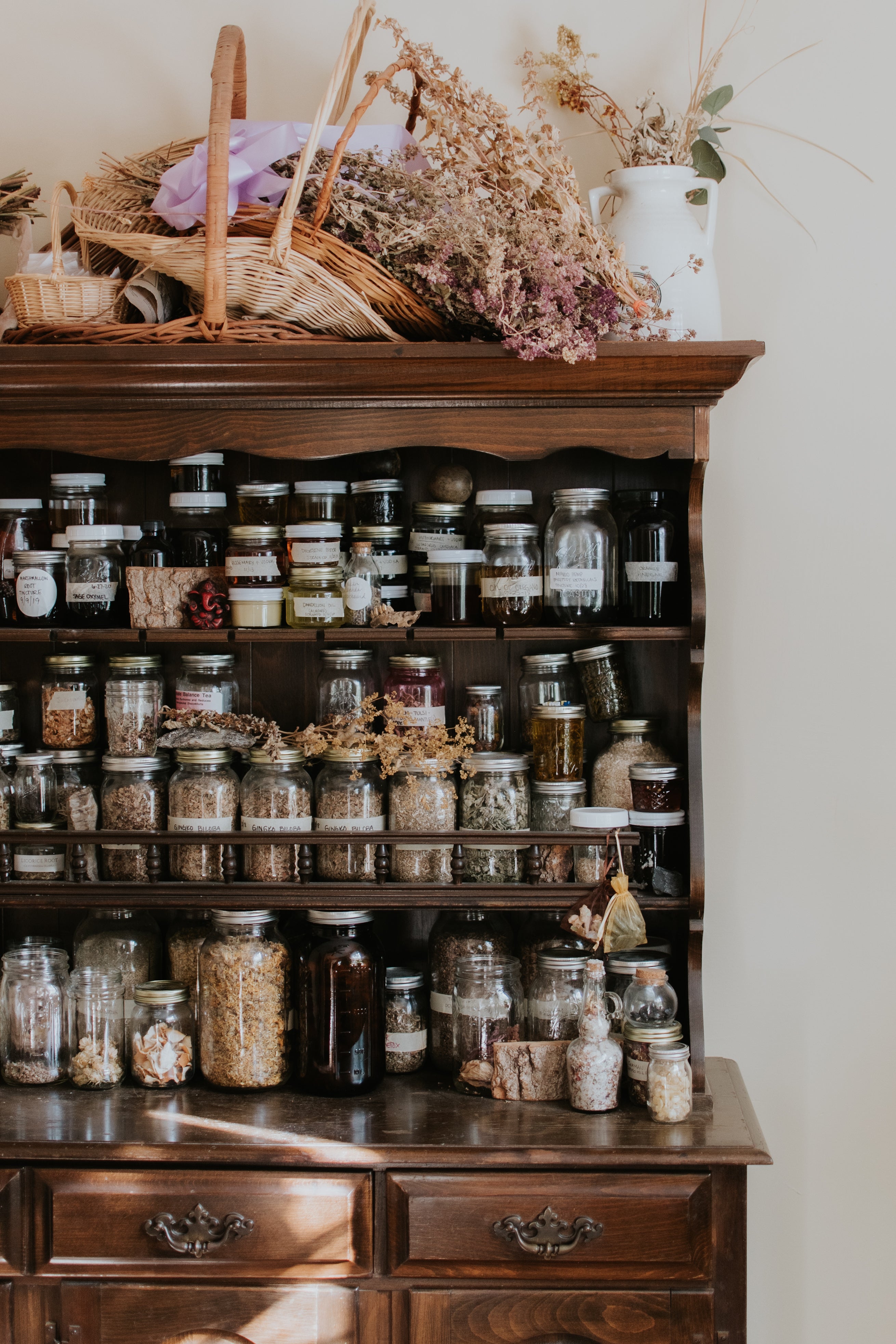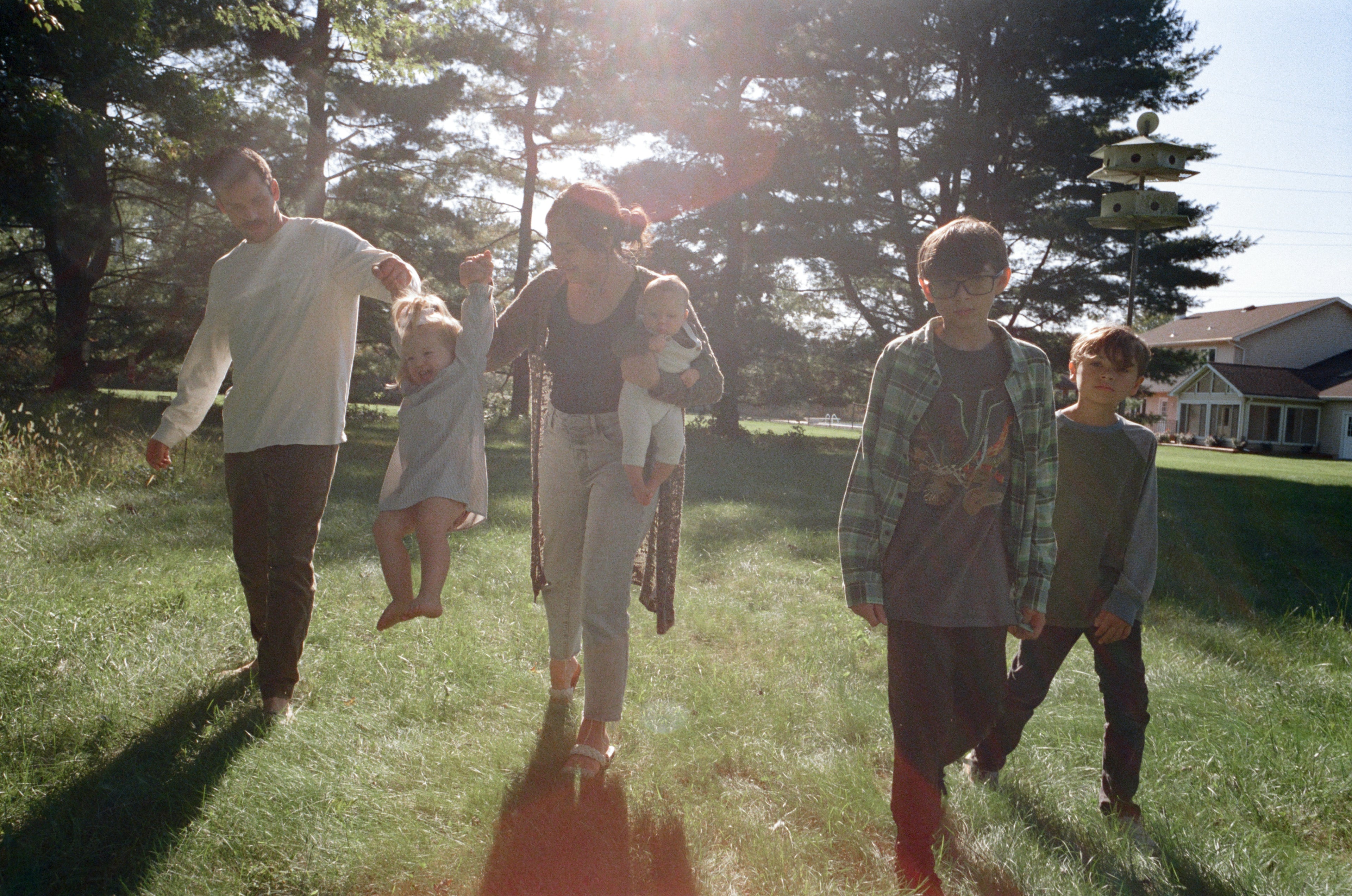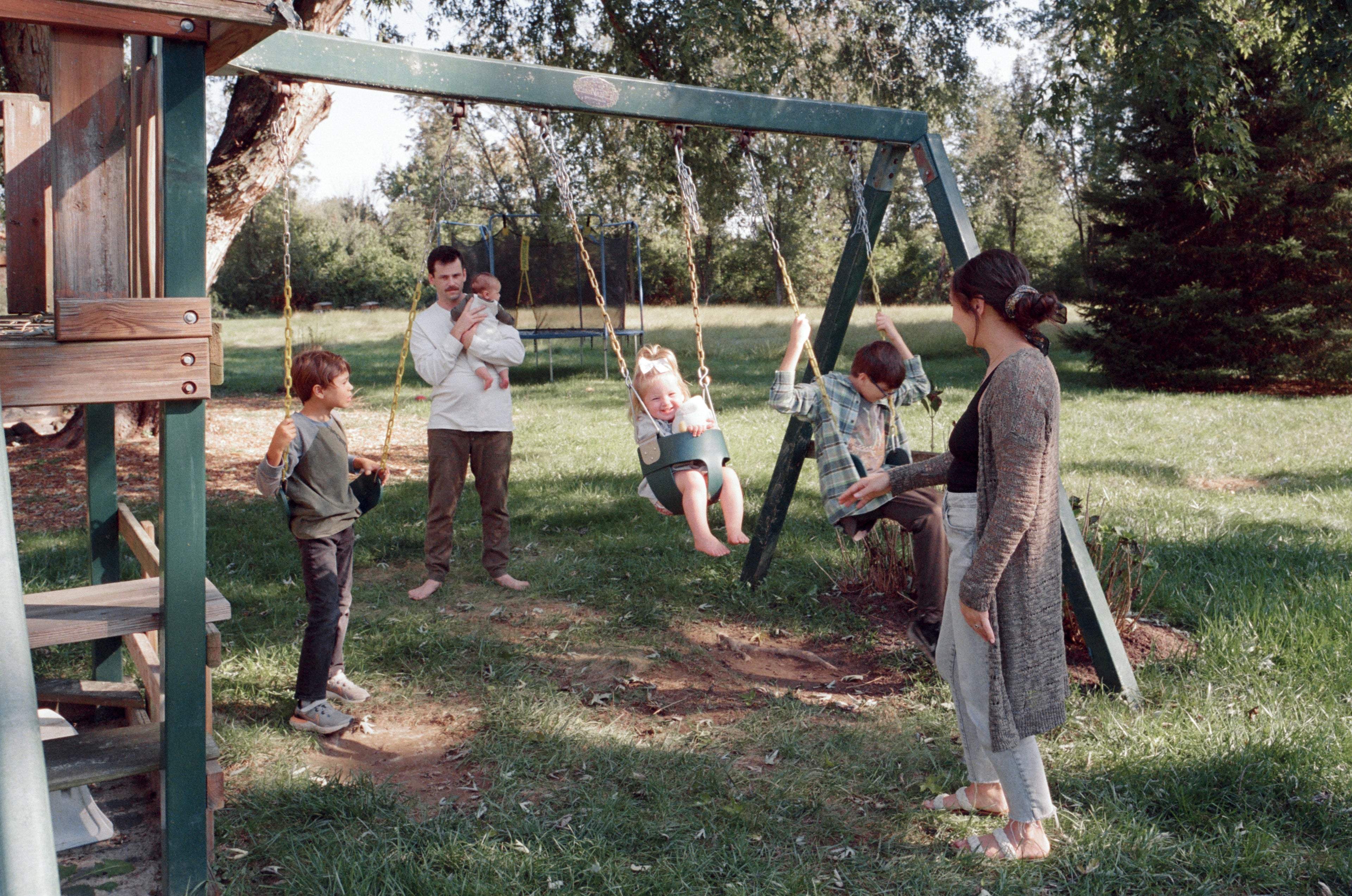
Story-teller. Manifestor. Problem-solver. Mother.
the Waxing Moon Diaries //
View all-

a Harvest Moon Menu + Cooking Itinerary
Preparing a meal for my family resembles orchestrating a small dinner party. Surprisingly, having an additional guest at the table inspires and motivates me to get busy. What's another setting?...
a Harvest Moon Menu + Cooking Itinerary
Preparing a meal for my family resembles orchestrating a small dinner party. Surprisingly, having an additional guest at the table inspires and motivates me to get busy. What's another setting?...
-

September // Harmony + the Harvest Moon
September symbolizes equilibrium – but often before we find balance, we experience instability, we feel impossibly wobbly. With summer waning and autumn approaching, the air feels crisp in the mornings...
September // Harmony + the Harvest Moon
September symbolizes equilibrium – but often before we find balance, we experience instability, we feel impossibly wobbly. With summer waning and autumn approaching, the air feels crisp in the mornings...
-

How To: Interview your Tarot Decks
When it comes to pulling cards, I see it as having a conversation. Similar to how I engage with specific individuals for particular discussions, I choose cards from specific...
How To: Interview your Tarot Decks
When it comes to pulling cards, I see it as having a conversation. Similar to how I engage with specific individuals for particular discussions, I choose cards from specific...



Collapsible content
Homeschooling
In the spring of 2023, my husband and I made the decision to transfer our boys out of public school. Our oldest son had been bullied and the situation escalated to the point where an extreme physical altercation occurred. Homeschooling was a calling for me long before the boys began their formal education and after much research and consideration, and a few, err, nudges from the universe, it was finally time to commit. We were fortunate enough to have a mostly supportive family network and resources that helped us transition fairly smoothly. And extremely fortunate to live in a state with simple guidelines to transition into homeschooling. Truthfully though, as a family of six, it wasn't always easy, and there were definitely moments of doubt and frustration, but we found our rhythm and discovered the joy of tailoring our children's education to their individual needs and interests. We also appreciated the flexibility of our schedule and the ability to incorporate real-life experiences into our lessons.
While our family did have some positive experiences within the public school system, it definitely wasn't the ideal fit for us. There are experiences and relationships that I deeply value that have come from our time spent in public school, but homeschooling was an appealing alternative I discovered in my early days of motherhood as I fantasized about raising my children on a homestead, growing our own food, exploring nature and watching my children learn and grow. I’ve spent many years in childcare settings, from babysitting neighbors as a preteen and working my first job as a summer camp counselor to nannying and presently, raising four of my own children. I knew I wanted to stay home with them while they were young, if I could, and I knew I wanted to be a really hands on parent.
To narrate the story of how I went from being a stay at home mom to two boys, living in a townhome, preparing to homeschool my almost 5 year old to a working, divorced woman living in a new town with those boys surviving, but definitely not thriving, in public school, to remarrying, becoming a mother of four and living my dream of homeschooling, homesteading, home-birthing and once again, primarily being a stay at home mom I would have to rewind time over a decade. However, this snippet sheds light on our past, the challenges we overcame, and how these experiences have influenced our perspectives and values in life.
After withdrawing our sons from school, we initially engaged in unschooling and a period of unlearning. Recognizing the importance of granting them a respite for several weeks or months, particularly with the impending arrival of our fourth child in July 2023, we intended to commence a structured curriculum in the fall but remained flexible to adapt as needed. The spring and summer hiatus for unlearning and recalibration proved to be profoundly enriching. Embracing the notion of life as our classroom enabled us to adopt a new perspective on learning, fostering receptivity to unconventional yet stimulating activities, and embracing play as a valuable educational tool.
While unschooling, it was really important to me to incorporate practical habitual activities into our routines. Slow mornings, nourishing meals, good hygiene habits, lots of imaginative play and reading. More cooking, more baking, more crafting. And doing it all together. Talking about our emotions, talking about our bodies and talking about uncomfortable things. I want to raise emotionally intelligent humans, not just academically intelligent ones. Even as we have shifted to incorporate a curriculum into our home education, we prioritize these activities in our home so we may instill positive habits in our children that will become second nature to them.
During mealtimes, the kids will assist in some way, either by harvesting, collecting ingredients, setting the table, or helping preparing the meal itself. We believe that learning is the root of life and to learn how to weave in the mundane, everyday tasks of life and make them enjoyable is an essential practice. Often we repurpose leftovers or make something fun for lunch that the kids can really get in to. If you asked my kids my favorite saying they might roll their eyes as they recite ‘many hands makes like work’ and it’s true, I remind them of it often. As a large family, living on a homestead, we all have to chip in and each of us has settled into a chore routine that mostly keeps the wheels from falling off.
Over time, the children have gradually adjusted their bedtime routine, tending to retire later, particularly during the summer months. By fall, they typically settle into sleep between 8:30-10pm. This pre-sleep period is often spent engaging in solitary activities or reading, providing a valuable opportunity for everyone in the household to unwind after a busy day. Rising naturally around 9am, they commence their morning rituals. The day unfolds with a wholesome breakfast, followed by a blend of morning basket activities, music, and outdoor pursuits. Prior to lunch, indoor time is allocated for academic tasks, during which the boys utilize their laptops to work through their daily assignments. Occasionally, the eldest crafts a personal schedule to complete his weekly tasks ahead of time, affording him the freedom to pursue other interests. The remainder of the afternoon is spent leisurely playing outdoors, doing handicrafts, and completing assignments together. By midafternoon all the guys (big, medium and small) are absorbed in their own activities and we transition into the evening gradually. Once the girls wake up from their afternoon naps we all mix, shift and match to engage them and get dinner started. By this time ‘school’ is long over but our home life and lessons are so closely woven together that we really don’t differentiate the latter half of the day.
Depending on the day, we participate in different extra curricular activities and arrange for practices and meetings. My second born does competitive gymnastics and is at the gym a few days a week, snowboards (seasonally) and wants to start horseback riding in the spring with his sister . Both boys take piano lessons with a local teacher and take art classes at the town Arts Center. My oldest is part of a Spiral Scouts group and is interested in boxing, like his late father and loves basketball and fishing. We take full advantage of the county library system we are part of and participate regularly in their program offerings as well as planning outings to museums, parks & hiking trails and attractions depending on the season and what we’re interested in. We meet regularly with other homeschooling families and organize activities and outings of all kinds.
Our approach to homeschooling and education doesn’t fit neatly into a box but if I had to choose, I would say we align most with the Waldorf method. We use a blend of our own resources and curriculum from Oak Meadow and have thoroughly enjoyed the process of creating, planning and organizing our lessons. We populate our lessons into a google classroom and it makes assigning and record keeping a breeze. With Oak Meadow, you can choose to complete the curriculum directly under their supervision through their virtual classrooms or work the materials at your own pace. Our family chose the self-directed version and right now this approach seems to be working well. When the time comes for our oldest to begin high school coursework, we are considering enrolling him through the accredited Oak Meadow program but it’s too early to decide that now.
Thus far, homeschooling has been a positive and rewarding experience for our family. Creating a list of local resources in our area and having a network of friends and family who are supportive of this journey has been invaluable. This summer, we will host our first season of Camp Mansfield, an outside, play-based homestead day camp to gather with our homeschool friends more often. Community is so important and is something we value greatly so we decided to create a space to share our home with our local friends.
Homesteading
It’s been over a decade of searching for articles online for skills to practice for homesteading before you have a homestead, reading books and watching videos on harvesting crops and chicken care, years of experimenting in the kitchen with canning and fermentation and bread making. A few months of sewing but a lifetime of crocheting on and off. Years of gardening in windowsills, community garden plots, tiny backyard beds and alongside the women of the Locust Light Farm Herbal Homestead Apprenticeship. More than ten years of saving pins to my ‘Homestead Dreams’ Pinterest board.
As a little girl, I spent some time living with my paternal grandmother in South Jersey, where she managed a sizable property with chickens and what I remember as a vast garden. Recollections of the compost bowl on counter, the delivery of a deep freezer and climbing in the coop remain vivid in my memory. I fondly recall expressing to my grandmother my desire for a white horse with black spots, envisioning calling her Rose. Although, presently I don’t own a mare named Rose, my life is enriched by a small flock of hens, two barn cats, several beehives and a bustling household of children. Engaging in daily activities reminiscent of my youth, such as chasing after chickens and indulging in warm cherry tomatoes right off the vine, I find myself living a dream. While a horse may be absent from my present reality, I have a daughter and a son eager to ride, suggesting that my childhood aspirations are not entirely out of reach. I couldn’t ask for more.
My husband, Matthew, and I oversee the homeschooling of our four feral children while managing an extensive garden that features a diverse array of native, edible, and medicinal plants on our two-acre property in the Garden State. We live on occupied Leni-Lenape land and pay tribute to the native peoples by stewarding this borrowed space with intention. We are gradually converting more and more of this land each year into a sustainable, edible landscape. In 2020, Matthew achieved his permaculture design certification and has been actively experimenting on our property and imparting knowledge to our children in the process. Our garden boasts a rich assortment of elderberries, black-eyed Susans, echinacea, stinging nettle, swamp mallow, catnip, tansy, lady's mantle, and various other native and medicinal plants, alongside an assortment of annual vegetables and flowers.
Every year, the older children take responsibility for nurturing their own plants in the garden and actively contribute throughout the growing season. They play a vital role in tasks such as weeding, harvesting, and maintaining the main garden, in addition to watering their designated pots and beds. One child tends to a flourishing strawberry patch, while another excels in handling shovels and digging all. the. holes. Our collaborative efforts in the garden serve as a grounding activity for our family, cherished as one of our favorite bonding experiences with only occasional tears when bunnies steal berries. Many times there are moans and groans when the work gets tiresome but we are here to teach balance and nature makes it so easy when she rewards our hard work with things like fresh, ripe cantaloupes and juicy tomatoes.
Outside the garden gates, there is more work to be done. Chickens need tending and the cats require fresh water. Yet, for the most part, our daily chores are transformed into enjoyable and stimulating activities through the eyes of a child. It involves gathering eggs and granting the hens freedom to roam. It's the joy of discovering a budding flower or the first pepper of the season. Engaging in activities like playing in mounds of dirt, constructing rock formations, and marveling at the emergence of seedlings in the starter tray. Amid the toil of homesteading, there exists an enchanting blend of magic, especially when shared with children. Working alongside them encourages us to decelerate, relishing moments of play and embracing the present. It allows us to appreciate the simplicity of learning through observation and harmonizing with the rhythms of nature.
Hosting & Gathering
To gather: to come together, assemble or accumulate. Formally, casually, spontaneously.
As a homemaker, I derive immense joy from the process of gathering, whether in a formal setting, informally, or with an unexpected visitor. Being inherently sociable, I find energy and fulfillment in bringing people together. Though there are instances when solitude or the presence of only close family members is preferred, typically, I embrace the company of others with open arms and a fitting beverage.
For over a decade, my expertise has been in orchestrating birthday parties, baby showers, bridal showers, and holiday events. From cozy garden affairs and dinner parties where friends mingle and children frolic, to elaborate Winter Solstice feasts with the extended family, I find delight in the meticulous art of event planning and hosting. Cooking daily for my own family of six could be deemed an art in itself.
Beyond managing homeschooling, homesteading, and homemaking duties, I dedicate myself to professional event planning and wedding coordination. Alongside my partner, Monica, we are the proud owners of Vaux Studio, a boutique micro-wedding venue in Philadelphia, and oversee wedding planning and design operations worldwide for our company, Hillbird Events.
As a wedding planner, gardener, herbalist, and practitioner of green witchcraft, my involvement and love for floral design may come as no surprise. Through the years, I have spent countless hours tending gardens and immersing myself in the realm of flowers. My kitchen table and loved ones have been recipients of numerous floral arrangements crafted during practice sessions. Designing and planning events professionally has fulfilled a long-cherished aspiration of mine, allowing me to take my creative experiments to the next level. While basic installation services are reserved for my Vaux clients and personal events, detailed floral design concepts are an integral part of all design services.
In both elaborate and intimate settings, I have cultivated the skill of adaptability and consider it my superpower (in parenting and planning). I believe in utilizing existing resources and building upon them. The essence of gatherings lies in fostering connections; it is about coming together rather than focusing on perfectly matched table settings or extravagant meals. I find simplicity in gatherings to be most meaningful, whether hosting intimate dinner soirées or enjoying impromptu visits from friends over a cup of tea. Intention is at the root of every decision. At Waxing Moon House, you can expect a diverse range of gatherings and events, complemented by my insights on effortlessly creating an inviting atmosphere.
While I appreciate simplicity, I often notice my inclination towards maximalism. I take pleasure in elevating everyday moments by using the 'fancy china', adorning the breakfast table with a floral arrangement with cuttings from the garden and infusing mundane occasions with a touch of enchantment. It may seem contradictory to preach simplicity and maximalism but as a true Gemini through and through, I am eager to share insights on how bridge the two together. I curate my collection of entertaining pieces sustainably and affordably and draw inspiration from mother nature. I will provide guidance on transitioning your everyday items into captivating table settings. You can expect a variety of adaptable menus, seasonal floral arrangements, and table setting inspirations for diverse occasions.
Nutritional Values & Practices

When contemplating ‘real food’, whole foods come to mind—ingredients in their original form and/or consisting of single components or easily recognizable components. Our diet includes a variety of items such as meat, vegetables, fruits, dairy products, and fish. The goal is nutrient dense, easily digestible, compatible with our individual bodies and of course, delicious. We craft an array of culinary delights like bread, pasta, and assorted pastries. Moreover, we gather herbs and collect fresh produce from our garden, incorporating our harvests into our recipes. Engaging in creative pursuits together in the kitchen, we concoct herbal teas, oxymels, tinctures and fill capsules, both for enjoyment and medicinal purposes. Our activities involve collecting bountiful basil for pesto, processing copious amounts of tomatoes and apples for making applesauce and canning pasta sauce to last the year, elderberry picking for syrup and more.
Each year, we split a cow with a friend to replenish our freezer with grass-fed beef and participate in a local farm's CSA program. CSA, or Community Supported Agriculture, offers a unique opportunity to support and invest in local farms and communities by receiving a portion of the farm's produce. While specifics may vary among memberships, the fundamental concept involves an upfront payment for a share at the season's commencement, aiding the farm financially during the initial stages of the growing season. This initial investment fosters a sense of trust and collaboration. In exchange, members regularly collect their shares from a designated location and may even have the chance to partake in pick-your-own sessions. Each share is subject to variation based on weekly harvests, share size, or other factors.

One of the appealing aspects of our CSA share is the pre-selection process, where instructions provided at pick-up guide members on what to collect, such as 'one bag of greens,' allowing for choice within specified categories like leafy greens. This approach has introduced us to a plethora of new and diverse produce, encouraging experimentation and expanding our knowledge of the plant kingdom.
Engaging in weekly grocery shopping has evolved into a cherished family ritual. Our routine involves visiting the farm to collect our provisions and exploring the farmers market to indulge in local music, seasonal delights, and specialty items. Central to our philosophy is the belief that food serves as a form of medicine. Therefore, we prioritize consuming locally and organically sourced products. Recognizing the profound impact of diet on our well-being, we emphasize the importance of a strong immune system and a nourishing foundation for optimal health. Embracing the notion that our dietary choices shape who we are (aka, we are what we eat), I am committed to producing a significant portion of our food and sourcing the remainder locally. This approach allows me to gain insight into the food production process and develop a profound appreciation for the web that is our food supply chain.

And what would a witch’s kitchen be without an apothecary? Naturally, the garden overflows into the kitchen and the apothecary hutch is cluttered with dried flowers, leaves, roots and mushrooms galore preserved from the garden or sourced as ethically as possible. The shelves are precariously arranged to store tinctures, oxymels, blends for infusions and flower essences. The ‘herb room’ is located just off the kitchen and beckons young and old with its fragrant offerings. The kids in particular love to spend time here. Amidst the whimsical chaos of forgotten baskets of crunchy herbs and playful kitchen antics, a deeper connection to the food production process emerges, weaving a tapestry of appreciation for the intricate dance of nature's bounty. In this witch's kitchen, every ingredient tells a story, every concoction a whispered secret, and every meal a celebration of the interconnectedness that sustains us all.



